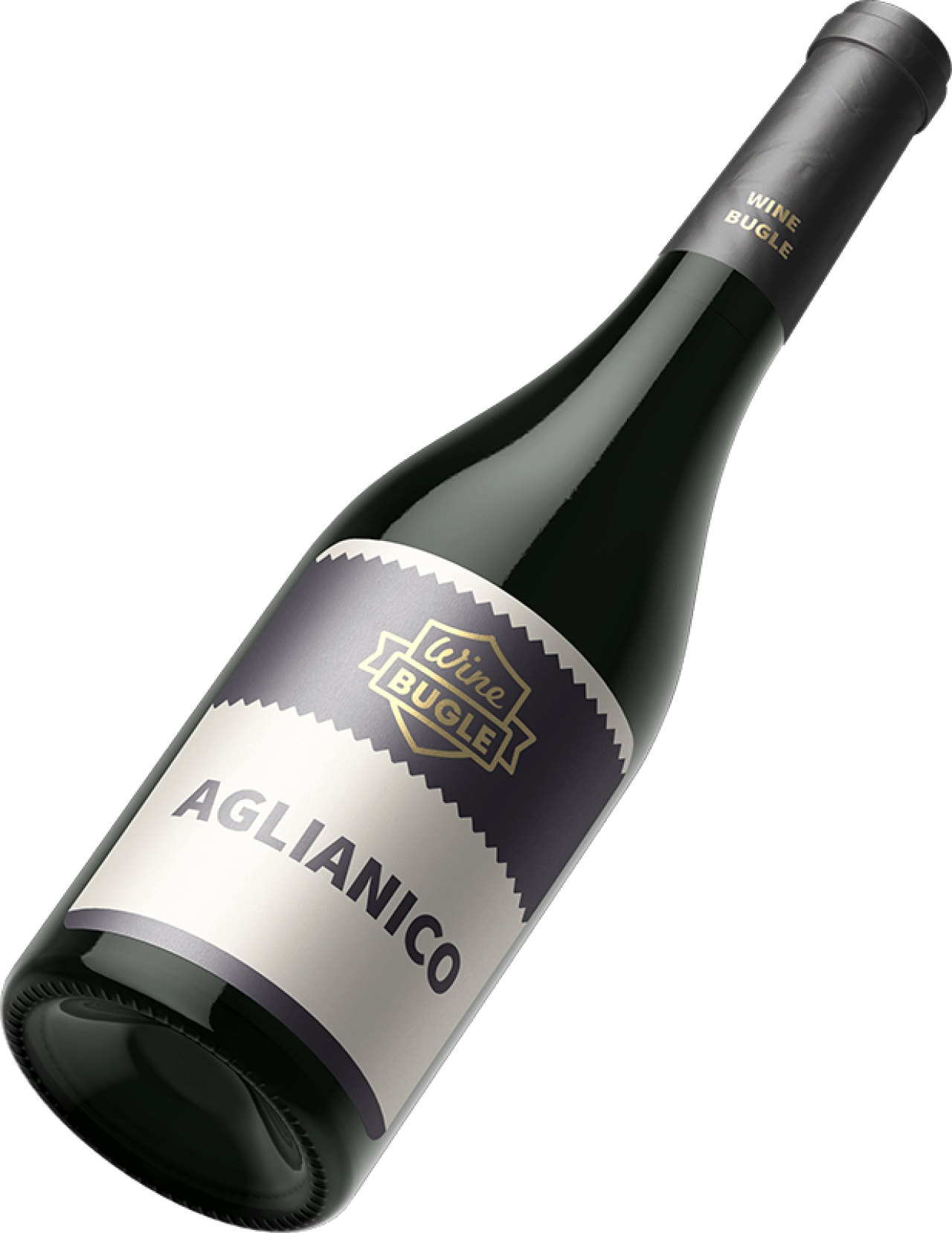Origins of Aglianico grape
Aglianico is a red grape variety widespread in southern Italy. Its origin is difficult to pinpoint, but it is supposed to come from Greece, probably imported during the colonization of the 7th century BC. Its name seems to derive from the Hellenic word and would have been born following the domination of the Aragonese in southern Italy. Aglianico seems, in fact, to originate from the Spanish pronunciation of Hellenico.
It produces exceptionally powerful red wines but can also be vinified in rosé, with excellent results. It is often used alone but can be blended with other local varieties.
Where Aglianico is grown
It is grown in particular in Irpinia, in the Campania region, in Basilicata, and more sporadically in other southern regions. Outside of Italy, Aglianico has also recently been introduced in California and Australia.
It gives amazing results in volcanic areas, where the minerals of the soil are able to provide the essential aromatic elements for the production of high quality wines. From a climatic point of view, Aglianico prefers ventilated areas and winters that are not too cold. It suffers from excessive heat and drought.
On the volcanic slopes of Vulture and Taurasi and in the hilly area of Taburno it has found its ideal habitat, and it is in these areas that it reaches the highest quality, producing 3 important DOCG wines: Aglianico del Vulture Superiore, Taurasi, and Aglianico del Taburno. Taurasi is widely regarded as its highest expression, while Taburno wines have a more rustic style, and Vulture wines have a more fruity and jammy character.
Flavor, Style and Aging
Aglianico is neither an immediate nor easy to approach wine. It requires time and patience.
It needs at least 3-5 years to start expressing its qualities, but it gives its best starting from 10 years of refinement. The aging takes place in oak wood, but there are also those who use barriques, with a consequent exaltation of the tertiary aromas.
This grape produces vigorous wines, with particularly intense aromas, including notes of cherry jam, plum, violet, various spices, as well as ethereal hints, but also leather. In the mouth, Aglianico is round and seductive, tannic and full. It stands out for its very important structure, as well as for the long taste-olfactory persistence that envelops the palate.
These elegant wines combine strong personality and intense aromas, with important alcohol content, high acidity and strong tannins that are softened by the long wood aging. The exceptional quality of Aglianico is widely recognized, so much so that it is nicknamed the Barolo of the South.
Food Pairing with Aglianico
The wines of Aglianico, often gritty and tannic, go perfectly with important meat dishes, such as grilled meat and filet of beef. Furthermore, these wines are able to delightfully balance the complexity of traditional Italian first courses, such as lasagna with meat sauce or risotto with truffles and porcini mushrooms. They are ideal wines to accompany some international dishes, such as Argentine empanadas and the typical Texan pulled pork or beef brisket, but also aged cheeses like Pecorino.
It is often recommended to decant Aglianico before service.
